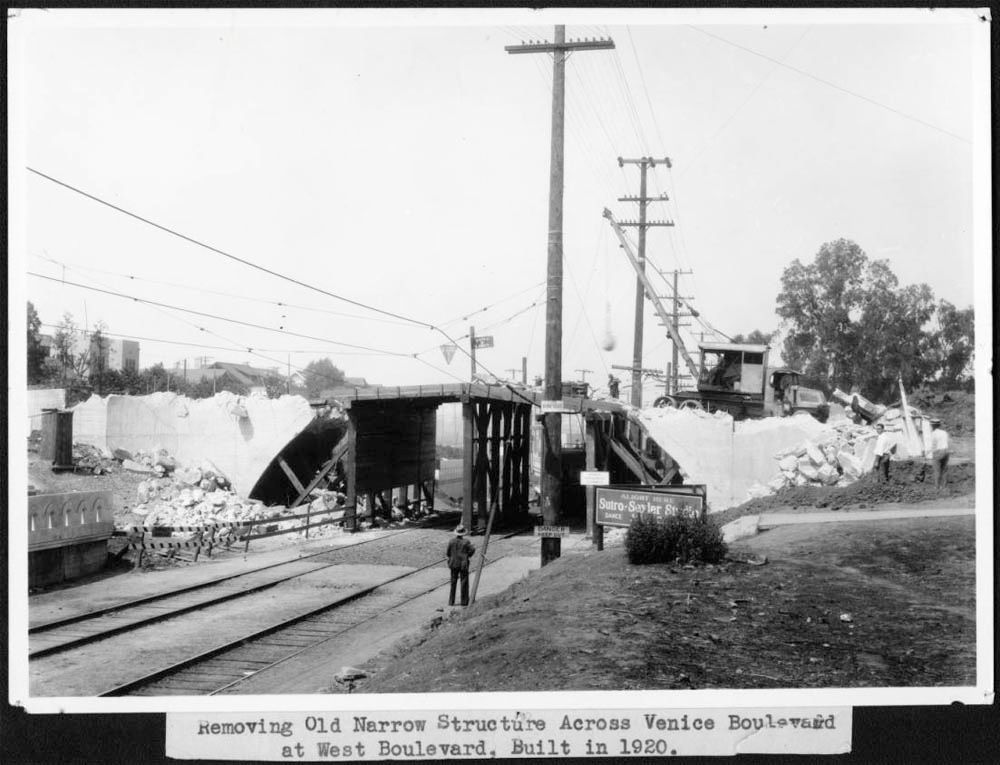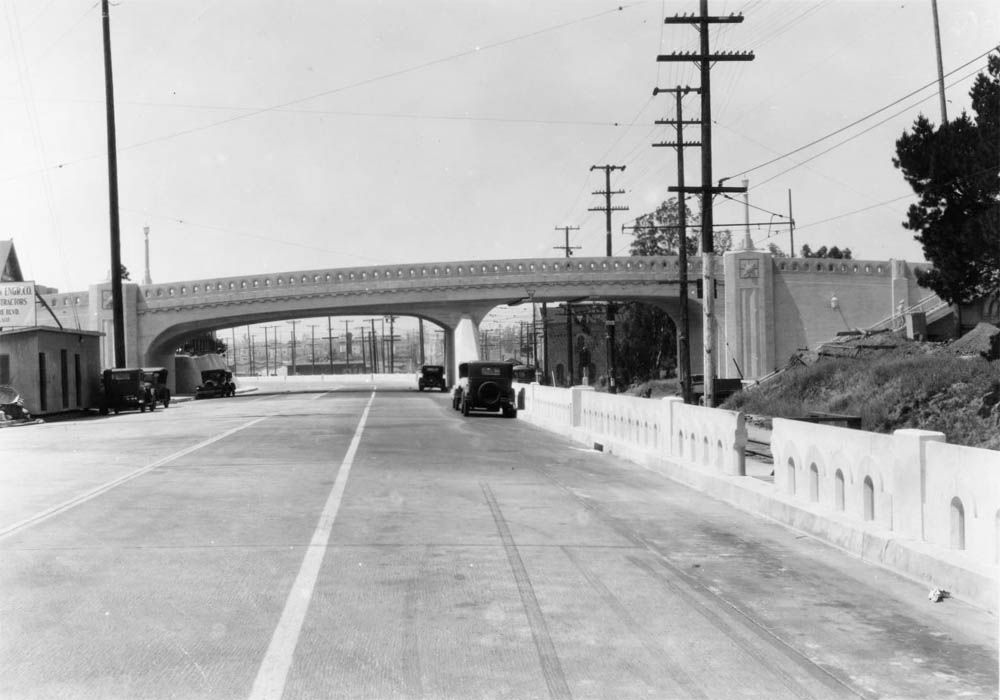Quote:
Originally Posted by HossC

Returning to West Boulevard Bridge, I believe this is one of the images that was used in Engine54's videos. It shows the demolition of the original, temporary bridge. It doesn't look like there was much room for automobile traffic on the left. If you zoom in, you can seen the name "Vineyard" on the large pole in the center.
 USC Digital Library
USC Digital Library
Like the picture above, this one is also dated vaguely at 1930-1960. I'd say that everything looks pretty new, and there's no moving traffic, so I'm guessing it's quite early. You have to look harder for the "Vineyard" sign in this picture - it's on the first pole after the bridge. It's a shame that the dividing wall, which matched the design of the bridge, has been replaced by a wire fence.
 USC Digital Library
USC Digital Library |
Hey guys...
Wow, you guys have been layin' it on with these photos and images of the West Boulevard Bridge. It's amazing how many images of this area and the bridge actually exist in archives. The digital age rocks. HossC and Tourmaline, thanks for those additional images of this great bridge.
HossC...Yeah, I think I did attack my subject, Mitzi, with that "back in the dark ages" image of Bunker Hill. My intentions were ourely honorable though, believe me! (Smile)
Speaking of Dr. Marxmiller, I believe he left the area not long after the 1913 accident and took what he had learned into World War I. They say he ended up in France where he gathered and perfected his skills in trauma medicine. Mitzi and I were talking about how his work at Vineyard Junction really is part of the history of emergency medicine which later gave us M*A*S*H and even today's Paramedic Squads. I also have to smile because in hearing the story of Marxiller and others TAKING THE INJURED AND DYING TO THEIR NEARBY HOMES is something we'd never see today for a thousand reasons, but it shows just how different things were back in those days.
In looking at the bridge, then and now, it's a shame that it stands there today without even a commemorative plaque. The historical societies, the neighborhood councils, and the city council office broke off talks long ago about doing something celebratory as they all got into massive pissing matches which is sad.
In looking at the area overall, I am always surprised as to how much the same it is now as it was in 1939. Most of the homes have survived with very few additions with the biggest changes taking place below the bridge. The tracks, as we know, are long gone and all of that is now Venice Boulevard. Sadly, Sears Pico is gone and replaced by the new Midtown Crossing Shopping Center. In fact, that whole Vineyard Junction rail yard is long gone. The Rimpau Loop is still in existence to a certain degree. Though the bus station has been moved due west, the entrance to the old bus yard/loop is still techincally there. Buses use it for a turnaround today and it also serves as a parking area for the shopping center. It's not there in the strictest sense, but it is there in some sorts.
Finally, I think, I agree with those who said that center divider that separated street traffic from rail traffic on Venice was very cool. It had the same arched motif of the bridge itself and I wish it were still there. That chain link fence has been there for as long as I have been alive and looks like crap.
Oh, I will tell you all this...there was a push to TEAR DOWN that bridge. When Lowes became a tenant, they noted that their loading dock was on the Venice side just past the bridge. In fact, if you look at Tourmaline's pic of the train exiting from under the bridge and you look father left, you are looking at today's Lowe's dock. Lowes compalined that the bridge was TOO LOW for their trucks to pass under. The city did consider demolition. At the time, it had not been granted city monument status and there had been some questions about its functionality. Luckily, historians, homeowners, and others mobilized to stop it. Also, in the 1980's, the city of Los Angeles Bureau of Street Lighting considered removing the lantern style GE Form 18 lights that were installed with the bridge. Luckily, again, all of those people came out to save them.
Thanks guys...love that bridge!
Chin/E-54